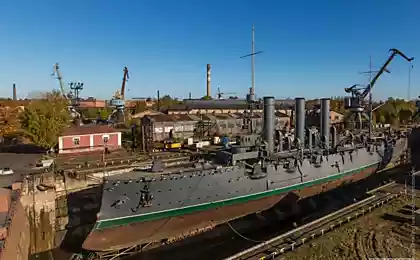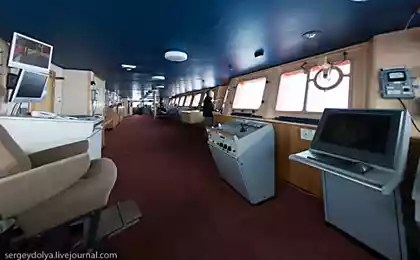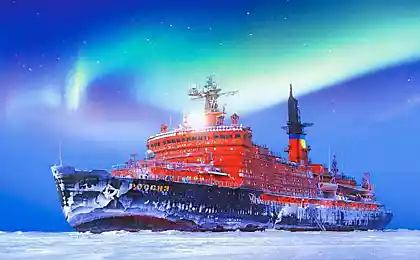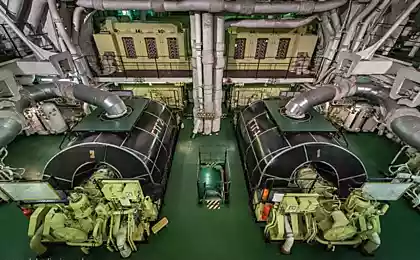1552
Tour of the icebreaker "Krasin"
Some of the material taken from Wikipedia, photos of their own for the most part (some photos taken from the same spaces). I'll try to post more quickly prepared a text in advance. The end marked.
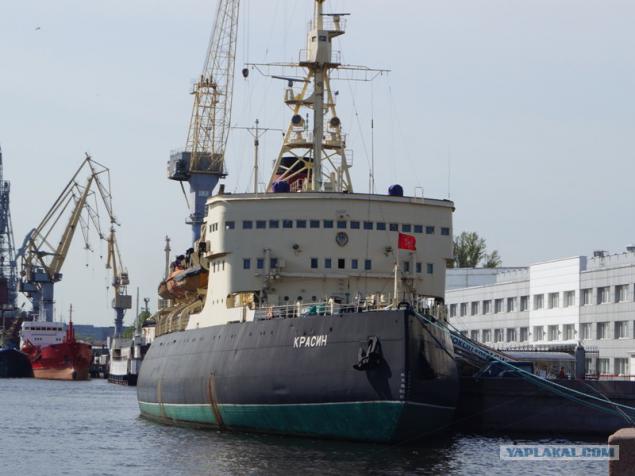
The icebreaker "Krasin" was built in 1916 (two years from the anniversary of the grandfather) on British shipyards commissioned by the Navy of the Russian Empire. October 1, 1916 the vessel entered the Navy of the Russian Empire under the name of "Svyatogor". Vessel's project is almost identical project icebreaker "Ermak", built in 1898.
Layout can be seen that the modern view of the icebreaker few matches its original appearance. In the original form of the whole superstructure consisted of the navigating bridge and chart room behind him. The current view of the icebreaker acquired only in 1956 Paulsen deep modernization
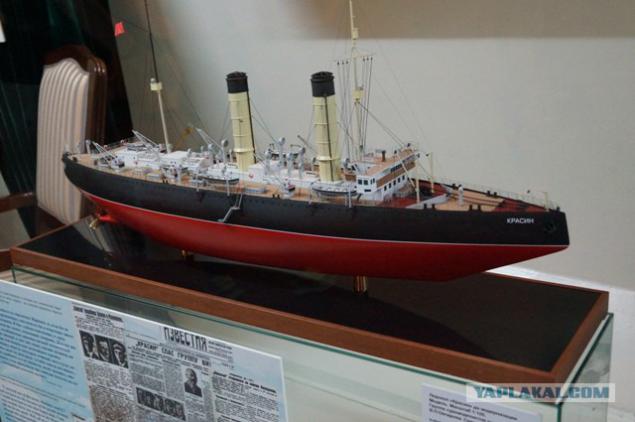
Icebreaker for several decades was the most powerful icebreaker in the world. Its basic, routine work was to navigation along the Northern Sea Route, but there is a lot of its history and, in truth, the heroic pages.
During the First World War "Svyatogor" held court with military cargo to Arkhangelsk, but his office was short-lived, in 1918, to prevent the passage of vessels of intervention to Arkhangelsk icebreaker "Svyatogor" was sunk in shallow waters of the Northern Dvina. The intervention was made by England - an ally of Russia in the Entente still ongoing war with Germany. The aim of the intervention was to protect the arms and ammunition supplied allies Russia and stored in the Murmansk and Arkhangelsk by transferring them to the Germans. At the end of February 1920 the invaders were gone, having withdrawn with an icebreaker (as it turned out to lift the ship had only to close Kingston and pump out water from the body).
In 1921, already at that time the Soviet Admiralty has offered to buy out the government Angii icebreaker. By 1922, with the active participation of the famous shipbuilder Krylov and the Soviet trade representative in the UK, LB Krasin icebreaker was bought. In 1927, in memory of the diplomat, who decided his fate, he was named an icebreaker "Krasin". And already in 1928, "Krasin" famous throughout the world as the savior of the Italian Umberto Nobile Arctic ekspiditsii. Of all the rescue ships under the flags of six different countries, our "Krasin" only managed to break through the belt and save the inaccessibility, the survivors of the crew of the airship "Italy". (These events are very well reflected in one of my favorite childhood films "The Red Tent "). On the way back he helped the German passenger ship "Monte Cervantes" with fifteen hundred passengers on board, which was damaged, a raid on the ice. For this heroic march icebreaker was awarded the Order "Red Banner of Labor»
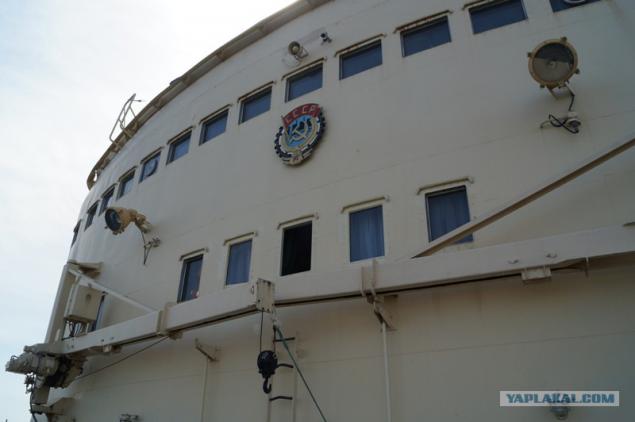
During the Second World War "Krasin" it was also mobilized to defend the homeland. He has been tasked to conduct convoy PQ-15 lendlizovskim cargo to Murmansk and Arkhangelsk. On the icebreaker was found weapons (anti-aircraft guns) and ship an opportunity to defend itself against attacks from the air. So during one of the attacks on the convoy PQ-15 account for calculating the zenith of the icebreaker "Krasin" appeared two downed German aircraft. In 1945, the icebreaker was disarmed and became finally a purely civilian ship, which remains to this day.
Currently, the icebreaker "Krasin" is the world's current icebreaker-museum. Examine it more closely.
1. From this angle is clearly visible round shape its board - thanks to this body profile icebreaker, getting on an ice floe and prolamyvayas its own weight pushes the ice in hand.
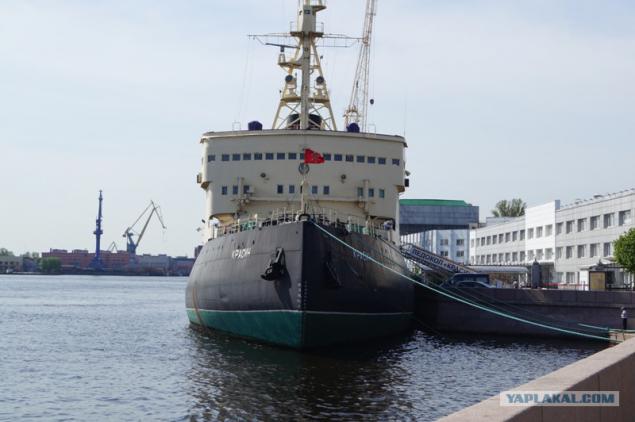
2. But there is a downside in this trump card - a very bad handling. The ship did not obey the helm, constantly straying off course.
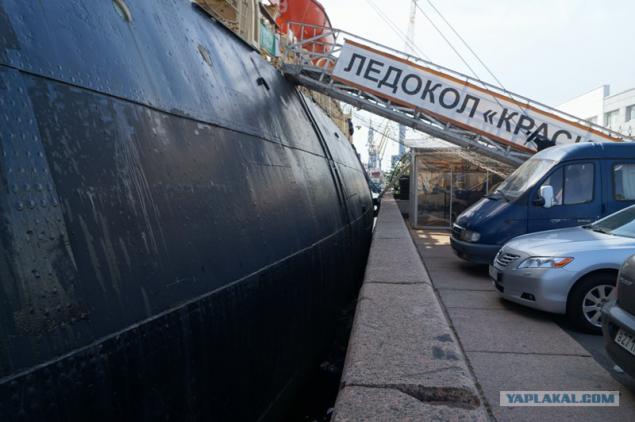
3. riveted hull, arc welding was not yet invented
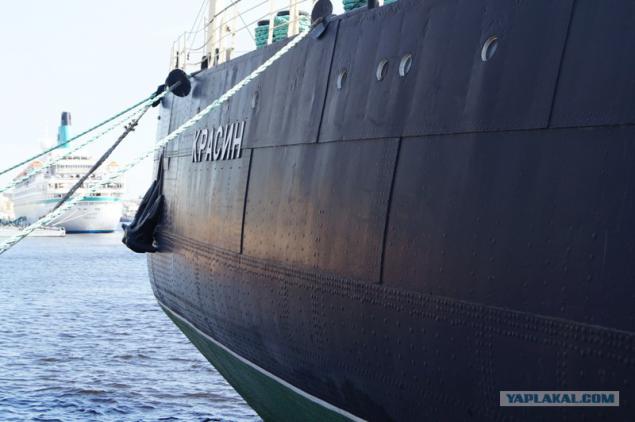
4. Go up the ladder
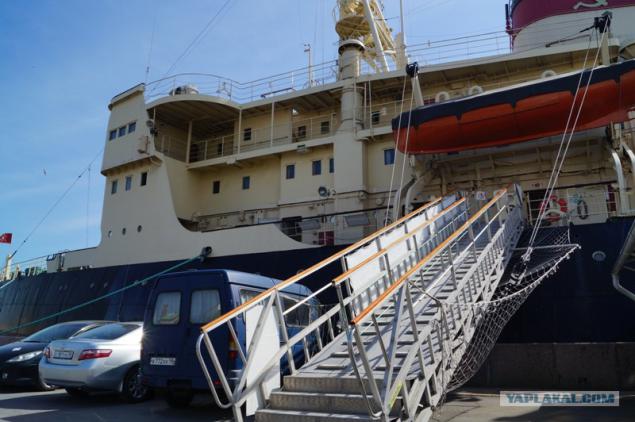
5. And we get on the main deck of the vessel, covered with teak oak. From the first steps on the deck imbued with a special atmosphere of the heroic ship, its rich history and traditions. Straight ahead towards the bow of the boat we see the spare anchor weighing 3, 5 tons. The two main anchors are identical with him
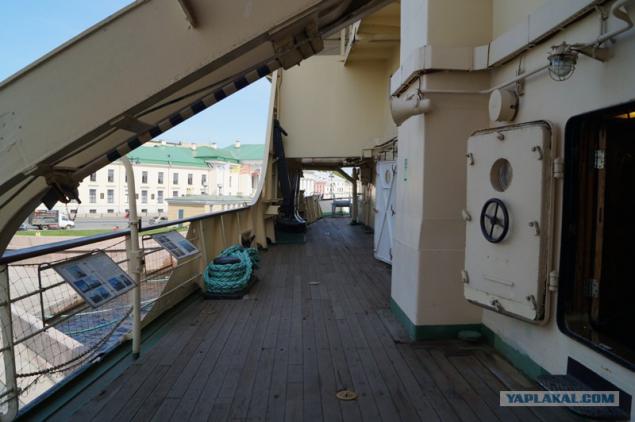
6. Let's look at it closer. You can even touch it, especially persistently tries otkovyryat piece of memory :)
Posted in [mergetime] 1401445479 [/ mergetime]
7. Pass on the prow
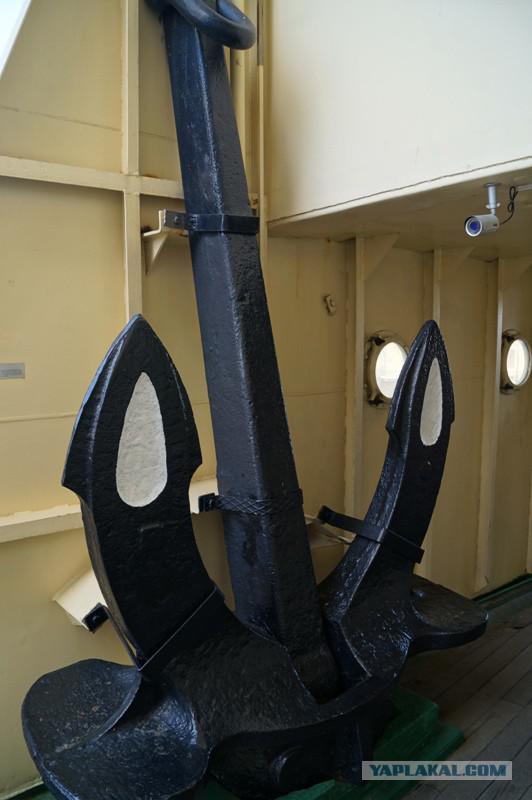
7. Pass on the prow
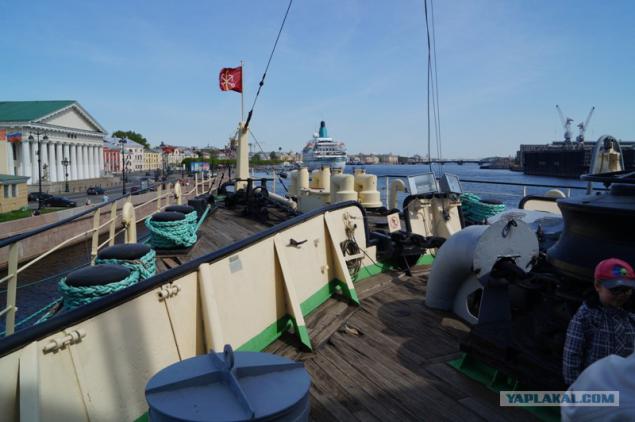
8. Rynda! Well, how can you pass up such a miracle. In the burning sun ship's bell discourage midday signal which (signal), in fact, is called Rynda. (When I just recaptured noon)
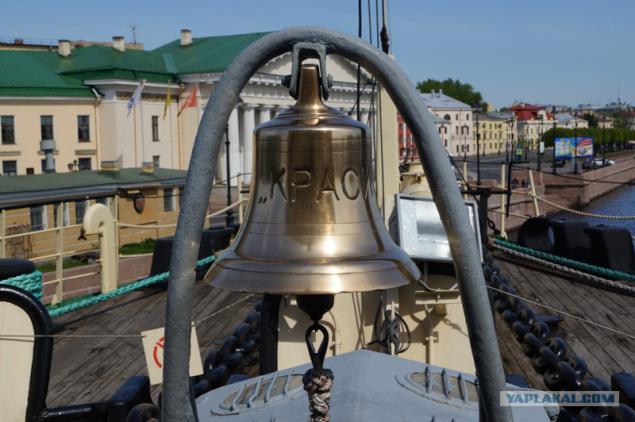
9. We pass on to starboard. We see the lifeboats. Lifeboats on the ship, so to speak, two sets. On each side, and each is designed for strength, superior double crew. This is to ensure that, if necessary, the entire crew to leave the ship (56) and possibly on board forced the passengers (Arctic expedition or previously saved the crew of the vessel in distress) .smogli do it in full on one side
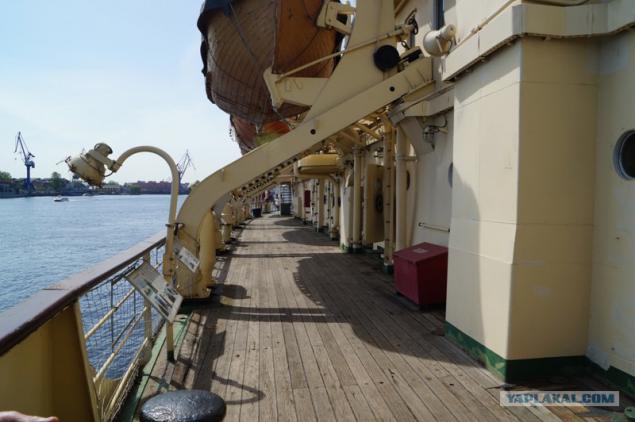
10. View of the boat at the boat deck
[
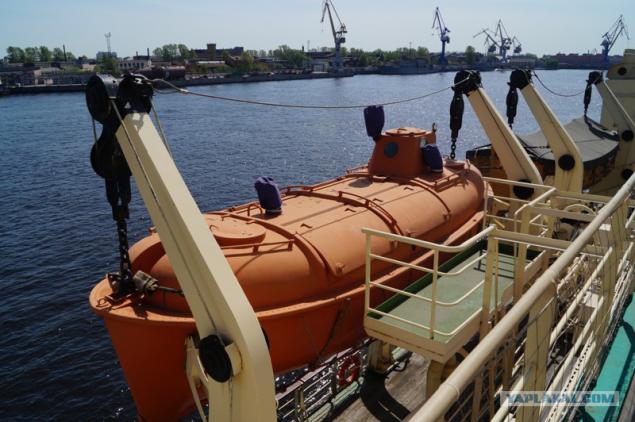
11. We are invited inside. As the ship is operating, maintaining order it happens from time to time with only naval diligence. All brass parts shine like ... Referring to ship ... And woe landlubber unknowingly stepped on kommings
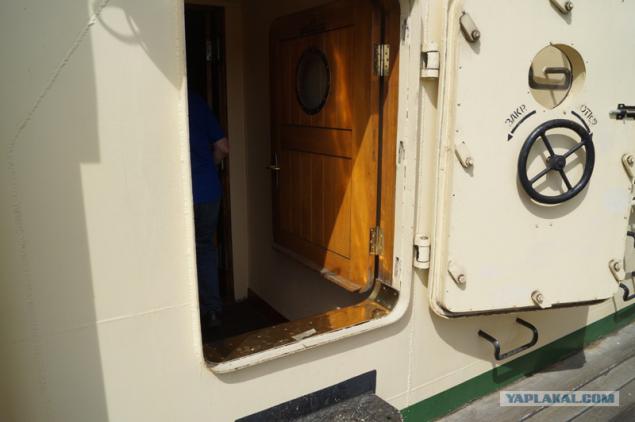
12. But we did, we know the law of the sea, and therefore carefully stepped over it and get to the main staircase that runs through the whole superstructure of the hold to the flying bridge
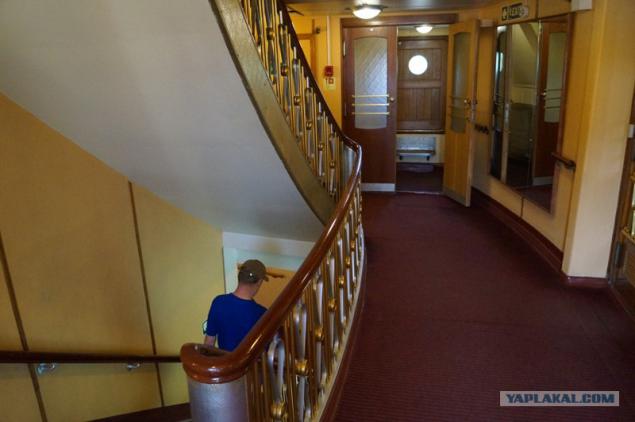
13. Go down to the lower deck
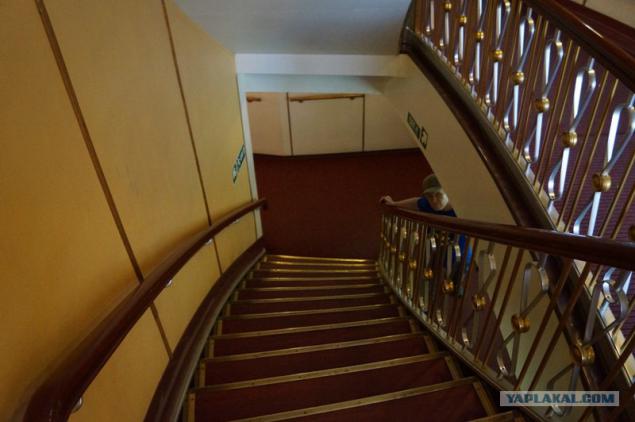
14. Here we show a historical film about the "Krasin". I read a lot of it all ahead of time just wandering down the corridor. The ceiling is quite low by the way. I'm with her 190cm went plunging head
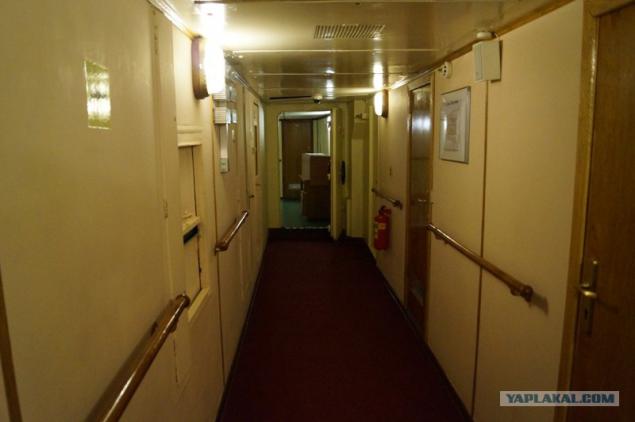
15. Then we go up to the main deck and we were invited to most multitasking functionality in its premise - wardroom. Multitasking because it is both a dining room for the senior officers and the meeting room and social club and a place for celebrations and a lot more then
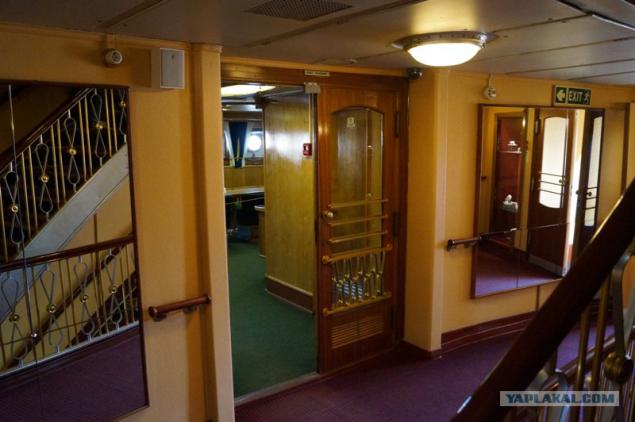
16. During the general assembly at the table collects all the command of the ship. At the head of the table sat the captain, first mate on the opposite side, and between them all the officers in order of seniority. While pitching in special grooves on the table inserted partitions to cutlery and other items did not go around the table. During a particularly violent storm on the table Staley Samoa effective in such cases sea invention - a damp cloth
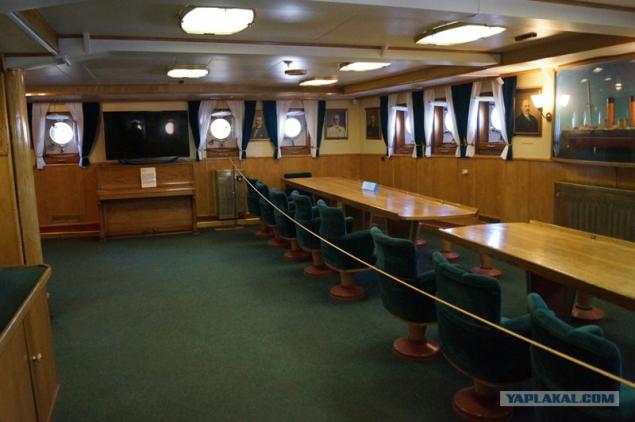
17. If you turn left from the front door you can get into a recreational area, a unique "chill» . There could be alone with someone and talk to interesting private topics, read a book, or listen to radiollu. In the photo is visible to the layout of the airship "Italia" in which Umberto Nobille reached the North Pole
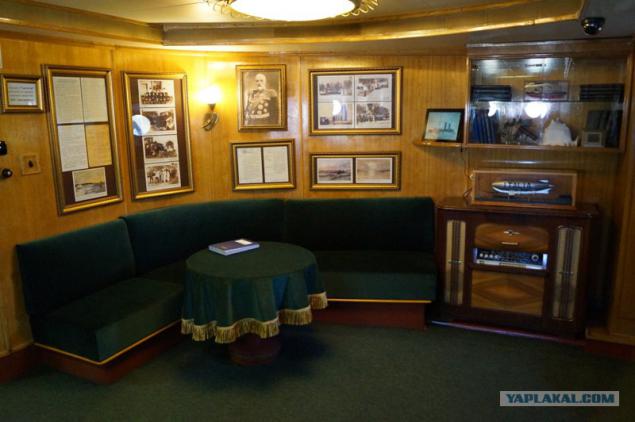
18. A rise above and take a look into the inner sanctum of the ship - the captain's cabin. The region is, in general, is not inferior to the wardroom. The cabin is divided into three areas in which the ship's captain has lived and worked (by the way is quite comfortable for a vessel conditions). At the entrance to get into a small hallway with a mirror and a hanger
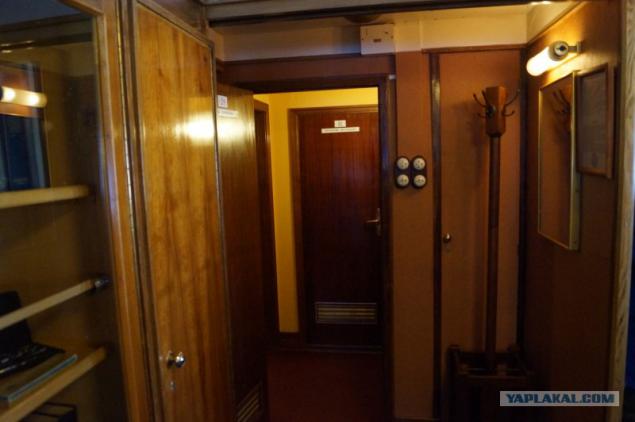
19. Immediately after her study of the captain. It was located his desk
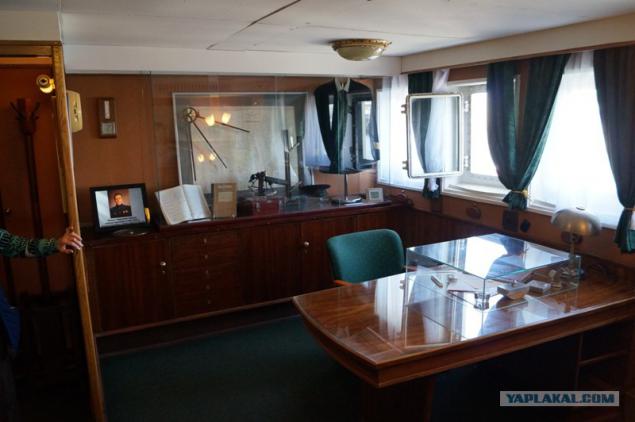
20. places for visitors
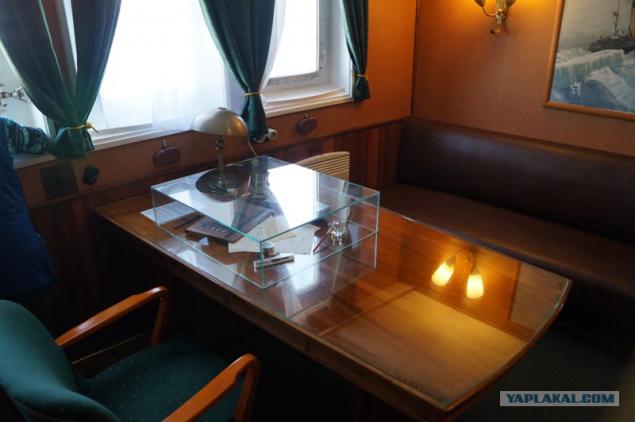
21. We pass on and get into the living room, a kind of personal mess-captain. Here he could in a more informal setting to receive visitors or to engage in any non-working "captain" chores
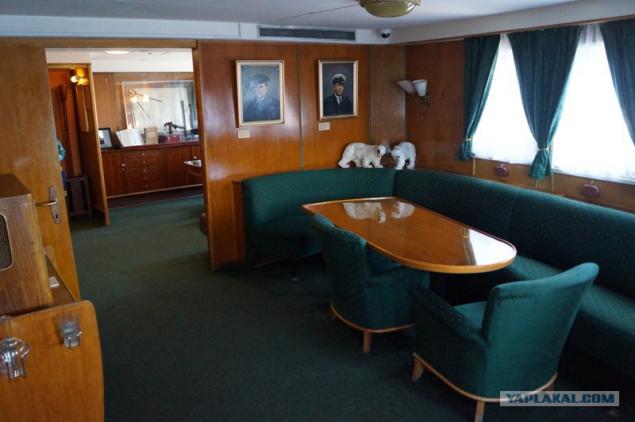
22. Here, as in general the main cabin is radiolla. As you can see the device to hold the carafe with a glass during a storm or pitching
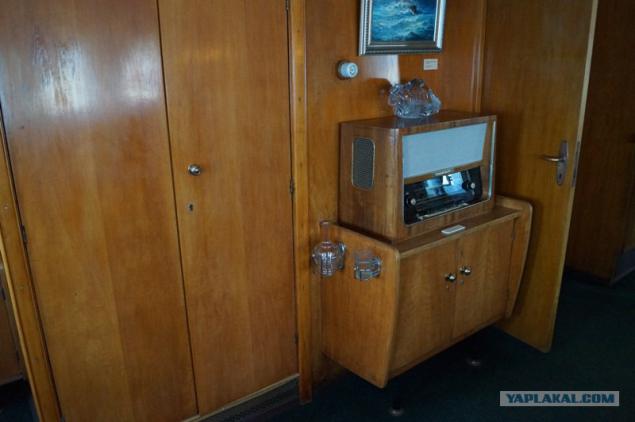
23. Another view of the living room
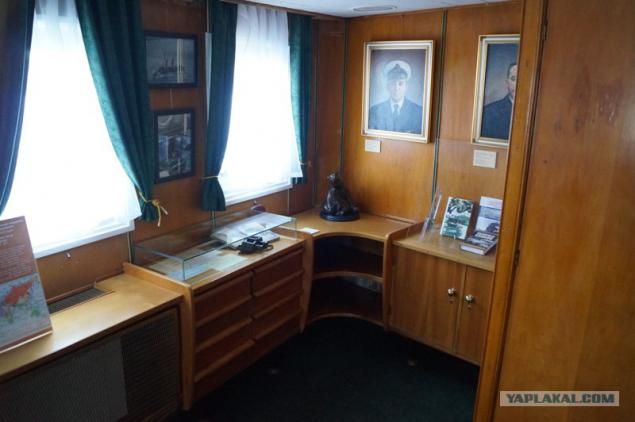
24. In the separate bedroom door was the captain of the ship. Near the bed is visible bell speaking tube from the navigation bridge. SELF author opus in the mirror is detected.
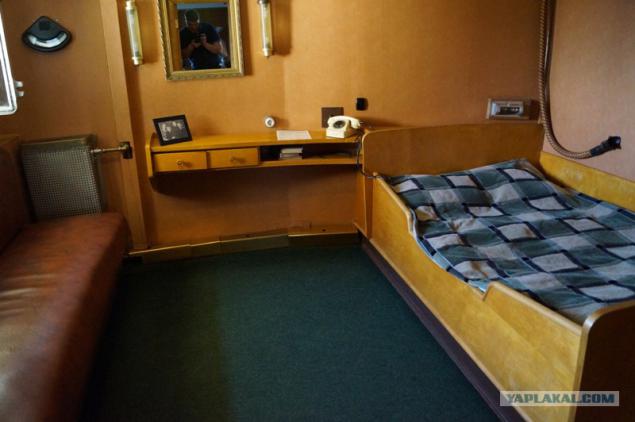
25. There is in this cabin and another important room. The room is available in the proper disposal of only one person on the ship - the captain. In my opinion the presence of the sole use of such facilities stresses of status is much steeper than the biggest stars on the epaulets

26. Fashionable now steam-punk design ceiling
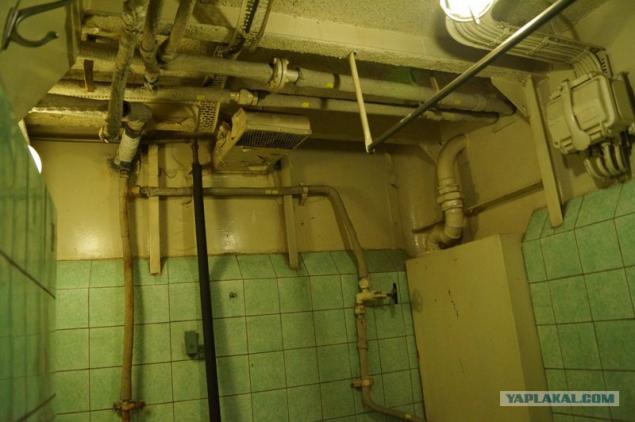
27. For comparison's cabin junior officers. The principle is also quite comfortable (This photo is not mine)
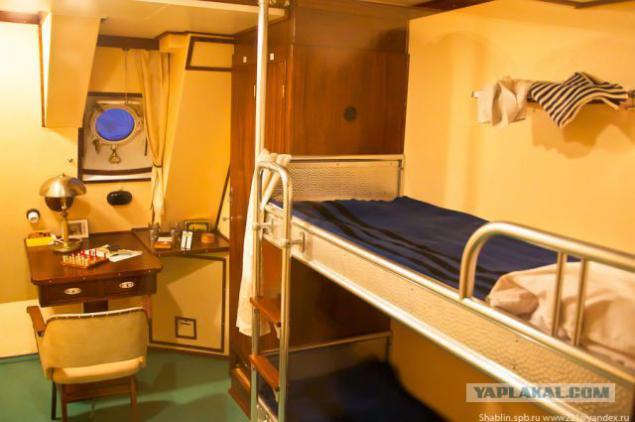
28.
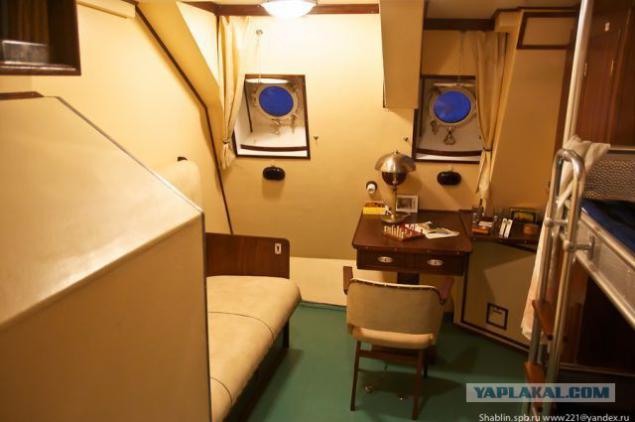
29. But we go further. Rise in chart-room. It is the brain of the ship. The place where it is calculated the ship's course in the harsh high latitudes, among icebergs and pack ice. This navigator provides the optimal route of the vessel, course and speed
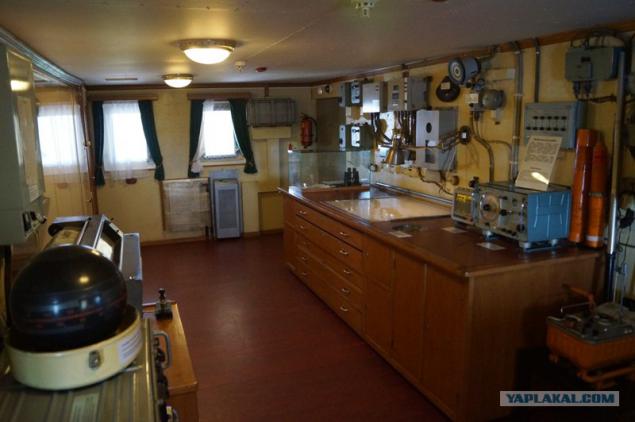
30. There are a number of different navigation devices, some of them familiar to me, the rest have to guess, but one thing always, all the ones designed for one thing: to determine the exact location of the ship, its course and speed. No DzhyPeEsov had not yet been invented, so that.
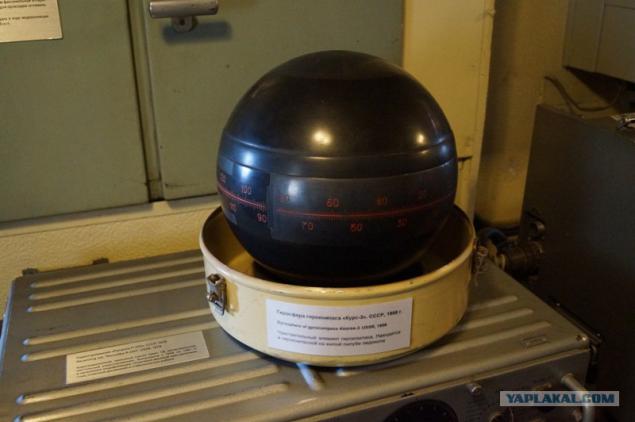
31.
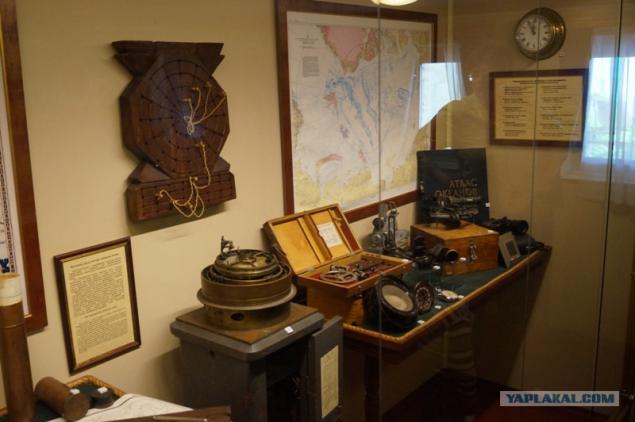
32.
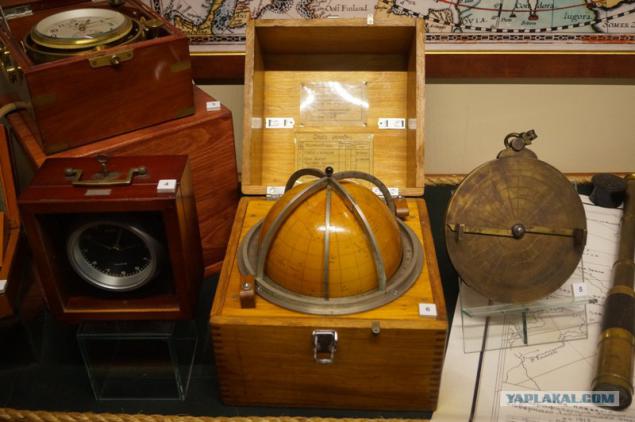
33.
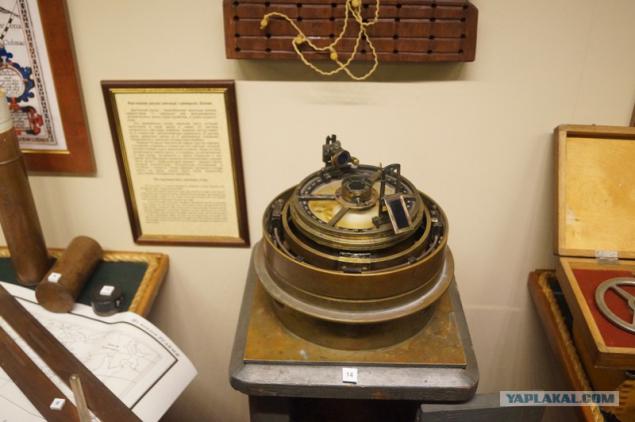
34.
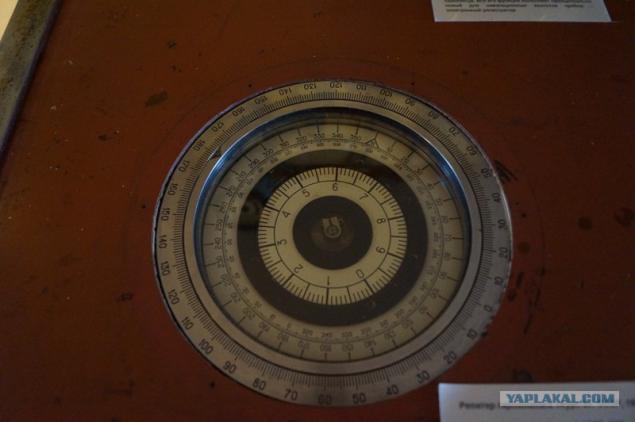
35. At this thing I want more detail. Lookouts board, she's a fox, she traverse. This kind of "analog track computer" here mentioned direction of movement of the ship, change course and speed. On top of the circular of the board marked the ship's course for 4 hours (Chassis watch last for 4 hours). It has 32 sectors and those sectors of the compass each hour watch officer or sailor stuck a peg in the sector that matches the rate of the ship. A lower part was used for monitoring the speed of the vessel. Each vertical column corresponds to a time period of 30 minutes and the line speed corresponds vessel. Thus at the end of the watch at the top of the board appeared the route of the vessel, and the lower its rate schedule for one watch. Data transmission watch recorded in the logbook
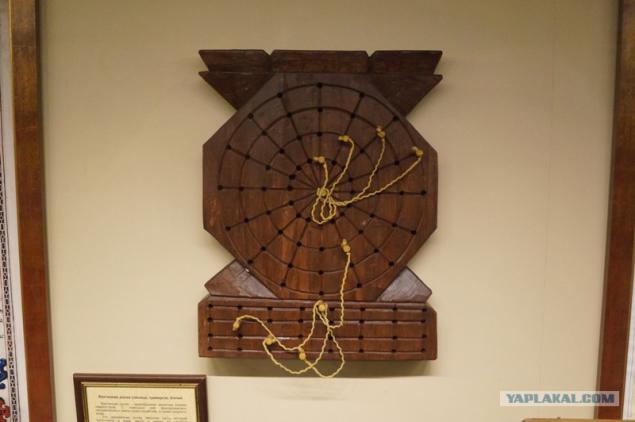
36. From the chart house get on the navigation bridge. Hence, the management of the whole ship being. Convenience watch consisting of 4 provides precise adherence to the set course. One of watch was directly at the helm, on the left we see the compass and telegraph machine control. To his right, oddly enough, too compass. They are generally on board a lot. Neither nor two. On the navigating bridge and chart room they do in every corner. As I said ZhyPeEsov was not!
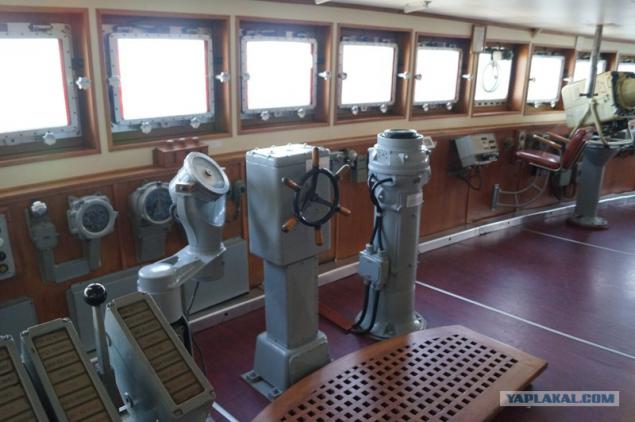
37. Right before steering the window visible wooden box with numbers - one more thing "Analog onboard computer" here is the same hourly rate of the ship was exposed to not forget and do not ask again, say the Navy is jamb
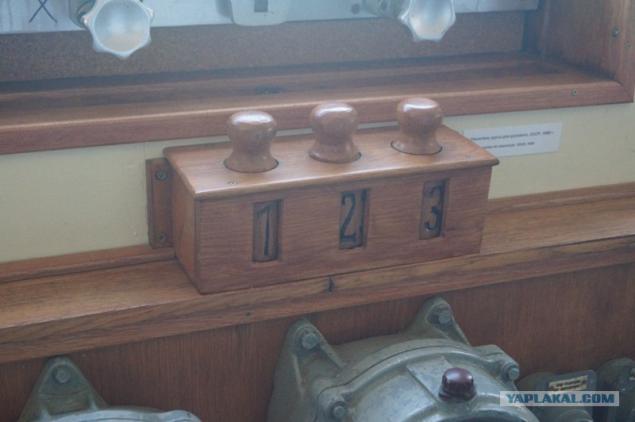
38. Next, the right of the steering seen the second place the watch. Let's look at it closer. Here we also see there is a compass and is already installed during the modernization of short-range radar. Stuck hanging behind the chair is not the periscope and turning the rod spotlight mounted on the roof
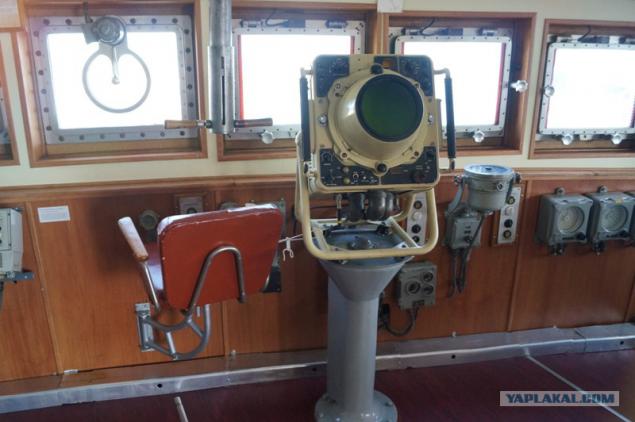
39. Next, another telegraph machine control
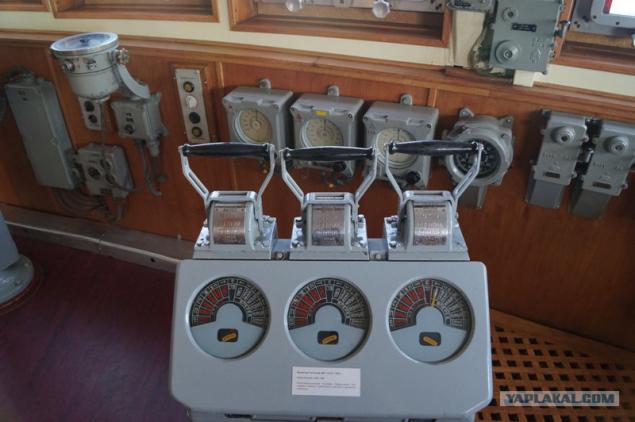
40. At the opposite end of the work area a third the watch, there is also present telegraph machine control and compass
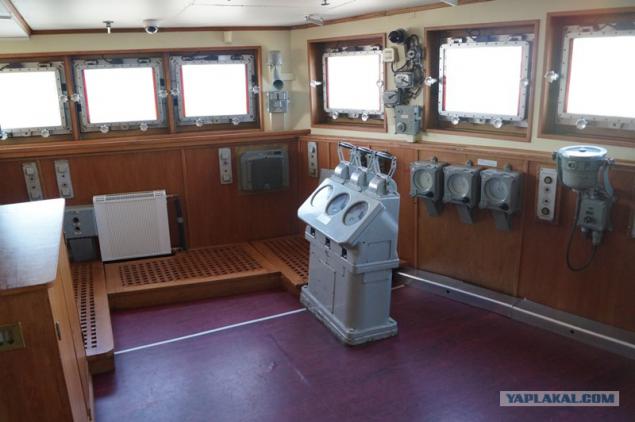
41. As well as long-range station radiolakatsionnaya
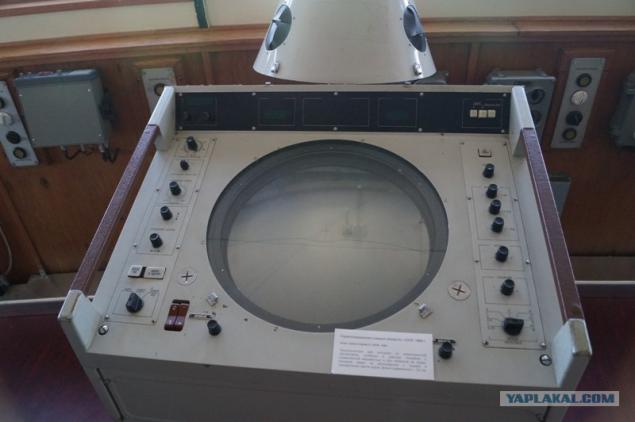
42. At the rear of the navigating bridge control panel contains all sorts of all the systems of the ship and intercoms. For thin tubes "on the other end" it was attached a brass whistle. When the watch would cause such as the engine room, he first blew a thin tube, and in a thick voice, he has to report
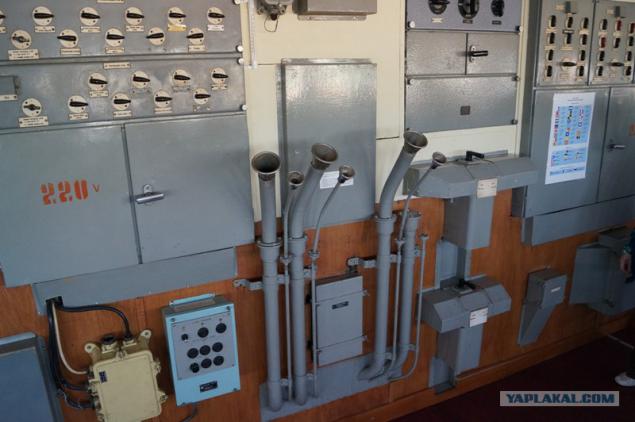
43. But there are also modern communication devices. Powerful and reliable as the entire icebreaker fleet
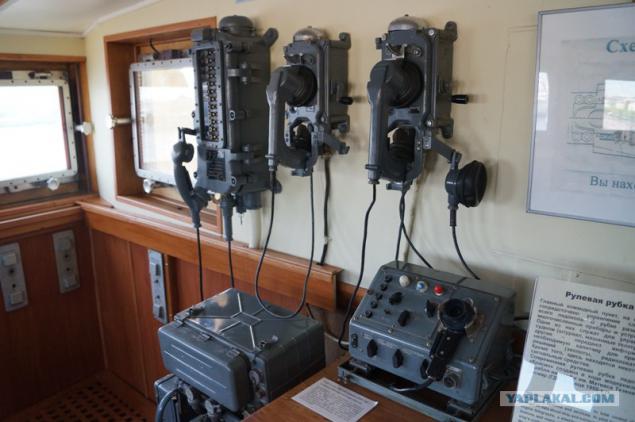
44. Well, then we leave the bridge and down the ladder to the main deck, from which we stamp the exit. Thank you! I finished
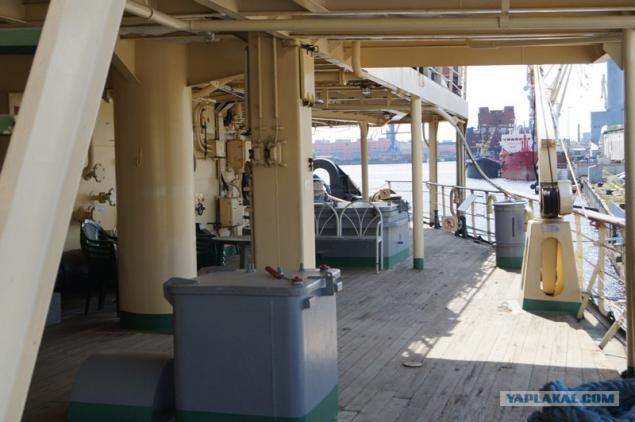

The icebreaker "Krasin" was built in 1916 (two years from the anniversary of the grandfather) on British shipyards commissioned by the Navy of the Russian Empire. October 1, 1916 the vessel entered the Navy of the Russian Empire under the name of "Svyatogor". Vessel's project is almost identical project icebreaker "Ermak", built in 1898.
Layout can be seen that the modern view of the icebreaker few matches its original appearance. In the original form of the whole superstructure consisted of the navigating bridge and chart room behind him. The current view of the icebreaker acquired only in 1956 Paulsen deep modernization

Icebreaker for several decades was the most powerful icebreaker in the world. Its basic, routine work was to navigation along the Northern Sea Route, but there is a lot of its history and, in truth, the heroic pages.
During the First World War "Svyatogor" held court with military cargo to Arkhangelsk, but his office was short-lived, in 1918, to prevent the passage of vessels of intervention to Arkhangelsk icebreaker "Svyatogor" was sunk in shallow waters of the Northern Dvina. The intervention was made by England - an ally of Russia in the Entente still ongoing war with Germany. The aim of the intervention was to protect the arms and ammunition supplied allies Russia and stored in the Murmansk and Arkhangelsk by transferring them to the Germans. At the end of February 1920 the invaders were gone, having withdrawn with an icebreaker (as it turned out to lift the ship had only to close Kingston and pump out water from the body).
In 1921, already at that time the Soviet Admiralty has offered to buy out the government Angii icebreaker. By 1922, with the active participation of the famous shipbuilder Krylov and the Soviet trade representative in the UK, LB Krasin icebreaker was bought. In 1927, in memory of the diplomat, who decided his fate, he was named an icebreaker "Krasin". And already in 1928, "Krasin" famous throughout the world as the savior of the Italian Umberto Nobile Arctic ekspiditsii. Of all the rescue ships under the flags of six different countries, our "Krasin" only managed to break through the belt and save the inaccessibility, the survivors of the crew of the airship "Italy". (These events are very well reflected in one of my favorite childhood films "The Red Tent "). On the way back he helped the German passenger ship "Monte Cervantes" with fifteen hundred passengers on board, which was damaged, a raid on the ice. For this heroic march icebreaker was awarded the Order "Red Banner of Labor»

During the Second World War "Krasin" it was also mobilized to defend the homeland. He has been tasked to conduct convoy PQ-15 lendlizovskim cargo to Murmansk and Arkhangelsk. On the icebreaker was found weapons (anti-aircraft guns) and ship an opportunity to defend itself against attacks from the air. So during one of the attacks on the convoy PQ-15 account for calculating the zenith of the icebreaker "Krasin" appeared two downed German aircraft. In 1945, the icebreaker was disarmed and became finally a purely civilian ship, which remains to this day.
Currently, the icebreaker "Krasin" is the world's current icebreaker-museum. Examine it more closely.
1. From this angle is clearly visible round shape its board - thanks to this body profile icebreaker, getting on an ice floe and prolamyvayas its own weight pushes the ice in hand.

2. But there is a downside in this trump card - a very bad handling. The ship did not obey the helm, constantly straying off course.

3. riveted hull, arc welding was not yet invented

4. Go up the ladder

5. And we get on the main deck of the vessel, covered with teak oak. From the first steps on the deck imbued with a special atmosphere of the heroic ship, its rich history and traditions. Straight ahead towards the bow of the boat we see the spare anchor weighing 3, 5 tons. The two main anchors are identical with him

6. Let's look at it closer. You can even touch it, especially persistently tries otkovyryat piece of memory :)
Posted in [mergetime] 1401445479 [/ mergetime]
7. Pass on the prow

7. Pass on the prow

8. Rynda! Well, how can you pass up such a miracle. In the burning sun ship's bell discourage midday signal which (signal), in fact, is called Rynda. (When I just recaptured noon)

9. We pass on to starboard. We see the lifeboats. Lifeboats on the ship, so to speak, two sets. On each side, and each is designed for strength, superior double crew. This is to ensure that, if necessary, the entire crew to leave the ship (56) and possibly on board forced the passengers (Arctic expedition or previously saved the crew of the vessel in distress) .smogli do it in full on one side

10. View of the boat at the boat deck
[

11. We are invited inside. As the ship is operating, maintaining order it happens from time to time with only naval diligence. All brass parts shine like ... Referring to ship ... And woe landlubber unknowingly stepped on kommings

12. But we did, we know the law of the sea, and therefore carefully stepped over it and get to the main staircase that runs through the whole superstructure of the hold to the flying bridge

13. Go down to the lower deck

14. Here we show a historical film about the "Krasin". I read a lot of it all ahead of time just wandering down the corridor. The ceiling is quite low by the way. I'm with her 190cm went plunging head

15. Then we go up to the main deck and we were invited to most multitasking functionality in its premise - wardroom. Multitasking because it is both a dining room for the senior officers and the meeting room and social club and a place for celebrations and a lot more then

16. During the general assembly at the table collects all the command of the ship. At the head of the table sat the captain, first mate on the opposite side, and between them all the officers in order of seniority. While pitching in special grooves on the table inserted partitions to cutlery and other items did not go around the table. During a particularly violent storm on the table Staley Samoa effective in such cases sea invention - a damp cloth

17. If you turn left from the front door you can get into a recreational area, a unique "chill» . There could be alone with someone and talk to interesting private topics, read a book, or listen to radiollu. In the photo is visible to the layout of the airship "Italia" in which Umberto Nobille reached the North Pole

18. A rise above and take a look into the inner sanctum of the ship - the captain's cabin. The region is, in general, is not inferior to the wardroom. The cabin is divided into three areas in which the ship's captain has lived and worked (by the way is quite comfortable for a vessel conditions). At the entrance to get into a small hallway with a mirror and a hanger

19. Immediately after her study of the captain. It was located his desk

20. places for visitors

21. We pass on and get into the living room, a kind of personal mess-captain. Here he could in a more informal setting to receive visitors or to engage in any non-working "captain" chores

22. Here, as in general the main cabin is radiolla. As you can see the device to hold the carafe with a glass during a storm or pitching

23. Another view of the living room

24. In the separate bedroom door was the captain of the ship. Near the bed is visible bell speaking tube from the navigation bridge. SELF author opus in the mirror is detected.

25. There is in this cabin and another important room. The room is available in the proper disposal of only one person on the ship - the captain. In my opinion the presence of the sole use of such facilities stresses of status is much steeper than the biggest stars on the epaulets

26. Fashionable now steam-punk design ceiling

27. For comparison's cabin junior officers. The principle is also quite comfortable (This photo is not mine)

28.

29. But we go further. Rise in chart-room. It is the brain of the ship. The place where it is calculated the ship's course in the harsh high latitudes, among icebergs and pack ice. This navigator provides the optimal route of the vessel, course and speed

30. There are a number of different navigation devices, some of them familiar to me, the rest have to guess, but one thing always, all the ones designed for one thing: to determine the exact location of the ship, its course and speed. No DzhyPeEsov had not yet been invented, so that.

31.

32.

33.

34.

35. At this thing I want more detail. Lookouts board, she's a fox, she traverse. This kind of "analog track computer" here mentioned direction of movement of the ship, change course and speed. On top of the circular of the board marked the ship's course for 4 hours (Chassis watch last for 4 hours). It has 32 sectors and those sectors of the compass each hour watch officer or sailor stuck a peg in the sector that matches the rate of the ship. A lower part was used for monitoring the speed of the vessel. Each vertical column corresponds to a time period of 30 minutes and the line speed corresponds vessel. Thus at the end of the watch at the top of the board appeared the route of the vessel, and the lower its rate schedule for one watch. Data transmission watch recorded in the logbook

36. From the chart house get on the navigation bridge. Hence, the management of the whole ship being. Convenience watch consisting of 4 provides precise adherence to the set course. One of watch was directly at the helm, on the left we see the compass and telegraph machine control. To his right, oddly enough, too compass. They are generally on board a lot. Neither nor two. On the navigating bridge and chart room they do in every corner. As I said ZhyPeEsov was not!

37. Right before steering the window visible wooden box with numbers - one more thing "Analog onboard computer" here is the same hourly rate of the ship was exposed to not forget and do not ask again, say the Navy is jamb

38. Next, the right of the steering seen the second place the watch. Let's look at it closer. Here we also see there is a compass and is already installed during the modernization of short-range radar. Stuck hanging behind the chair is not the periscope and turning the rod spotlight mounted on the roof

39. Next, another telegraph machine control

40. At the opposite end of the work area a third the watch, there is also present telegraph machine control and compass

41. As well as long-range station radiolakatsionnaya

42. At the rear of the navigating bridge control panel contains all sorts of all the systems of the ship and intercoms. For thin tubes "on the other end" it was attached a brass whistle. When the watch would cause such as the engine room, he first blew a thin tube, and in a thick voice, he has to report

43. But there are also modern communication devices. Powerful and reliable as the entire icebreaker fleet

44. Well, then we leave the bridge and down the ladder to the main deck, from which we stamp the exit. Thank you! I finished



